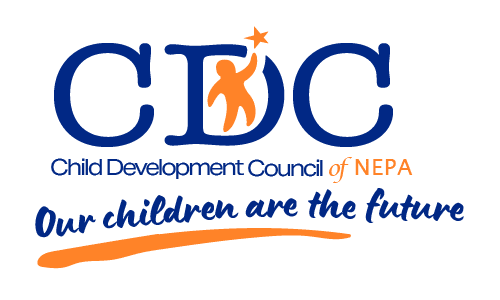Curriculum Overview
The centers of Child Development Council of NEPA follow a structured curriculum designed to provide a well-rounded educational experience for children of all ages.
- Main Curriculum: We utilize The Creative Curriculum as our primary framework.
- Supplemental Curricula:
- Risk Watch: A safety-focused curriculum.
- Color Me Healthy: A program promoting nutrition and health.
- PATHS (Positive Alternative Thinking Strategies): A curriculum supporting social-emotional development.
Appropriate implementation of our curriculum is considered a job performance standard for all staff members.
"The services provided by this center has provided me the ability to gain employment. I am able to focus on work while my child is gaining knowledge and having fun at this center."
- Hazelton Center

“I would like to extend my heartfelt thanks to the entire staff at the center for the incredible support and dedication they’ve shown to my son. Thanks to their attention and care, he has made tremendous progress in both his speech and social skills. We’ve seen such a positive transformation and it’s all because of the nurturing and encouraging environment you’ve provided. We are truly grateful.”
Developmental Screening
When a child enrolls in our program, a developmental screening is conducted using the Ages and Stages tool.
- The results are reviewed with the parents, incorporating their input.
- Parents sign off to confirm the review has been completed.

Developmental Assessments
Developmental assessments are conducted at least three times per year, with parent-teacher conferences scheduled to review results and discuss the child’s progress. Our assessment tools are tailored to the child’s age group:
- OUNCE: For infants and toddlers.
- Work Sampling: For preschool-aged children.
- School-Age Developmental Checklist: For school-aged children.
These assessments guide our planning and teaching as we implement the curriculum.
Regular Observations
Regular observations are conducted on each child to identify their strengths and weaknesses.
- Strengths: Recognized, applauded, and encouraged to further develop.
- Weaknesses: Targeted with specific activities or evaluated for special needs, if necessary.
These observations, along with assessment tools and curriculum materials, are readily available at each center.
